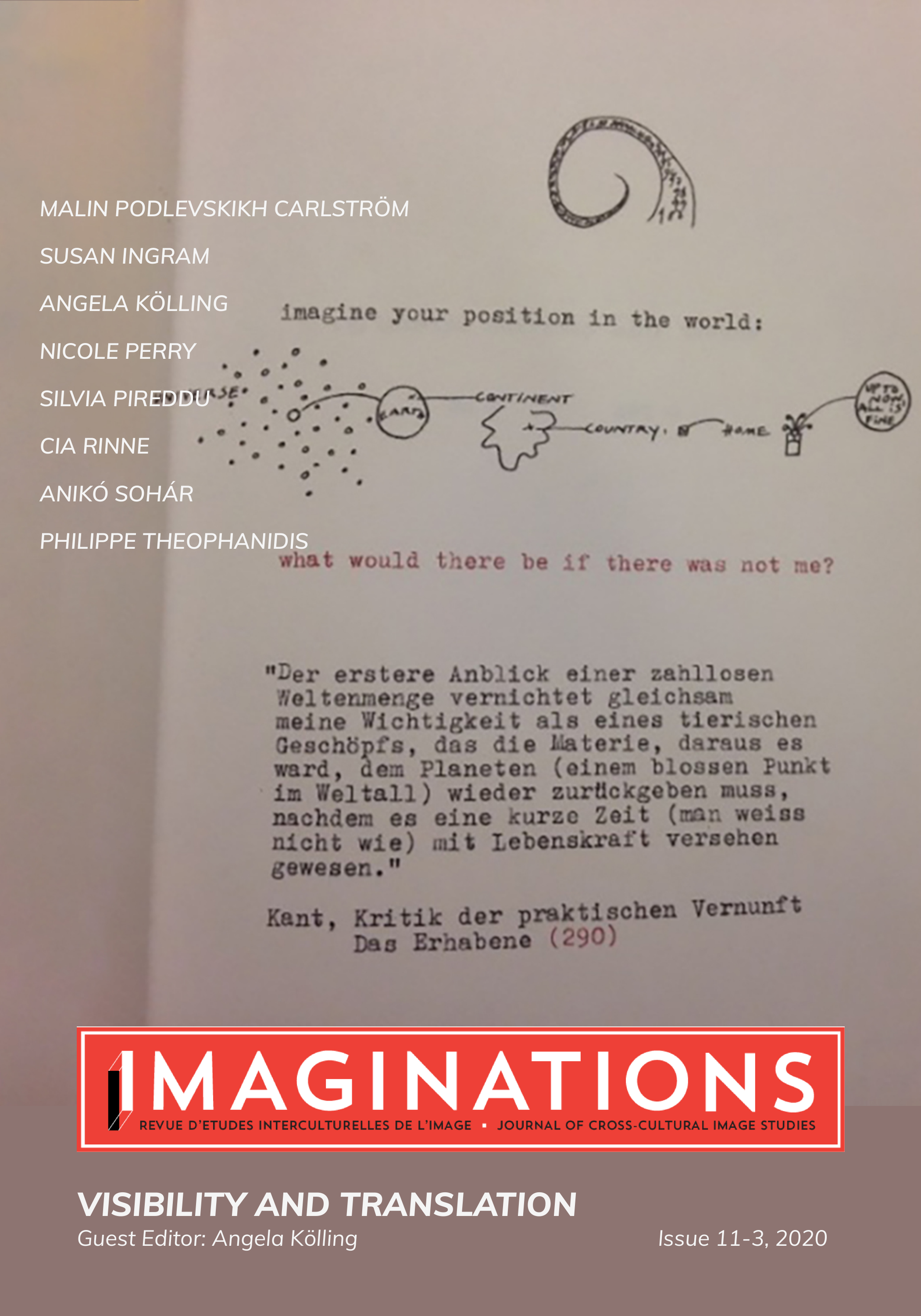Image as Translation: The Ideological Implication of the Camera Obscura for Media Studies
DOI:
https://doi.org/10.17742/IMAGE.VT.11.3.2Keywords:
image, translation, ideology, <i>camera obscura</i>, mediaAbstract
This essay relies on the historical figure of the camera obscura, as the site or place of articulation between the visible and the invisible. With the help of iconographic documents, it shows that it is not merely a process of inversion that defines the camera obscura. Indeed, a crucial spatial component is at play in the medium of the room itself: the camera is the very milieu where both an inversion and a displacement take place. From this perspective, it will appear more clearly that visibility does not stand beside or float above the invisible, but “takes place” right at its heart.Downloads
Published
2021-02-23
How to Cite
Theophanidis, P. (2021). Image as Translation: The Ideological Implication of the Camera Obscura for Media Studies. Imaginations: Journal of Cross-Cultural Image Studies, 11(3), 15–31. https://doi.org/10.17742/IMAGE.VT.11.3.2
Issue
Section
Articles
License

This work by https://journals.library.ualberta.ca/imaginations is licensed under a Creative Commons 4.0 International License although certain works referenced herein may be separately licensed, or the author has exercised their right to fair dealing under the Canadian Copyright Act.




